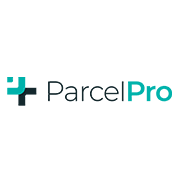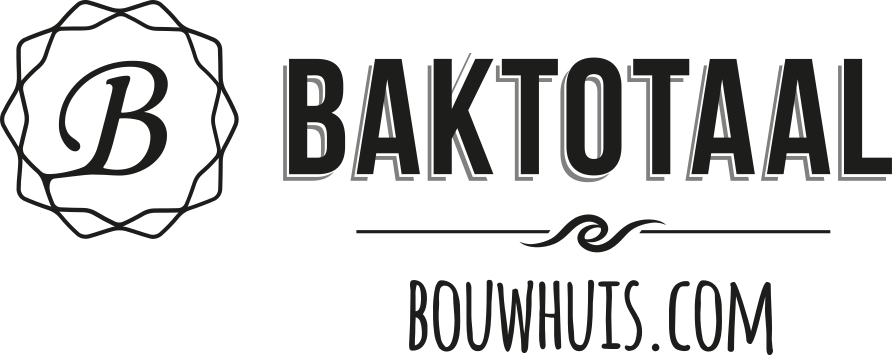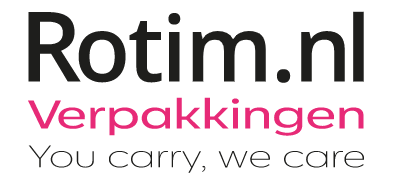
Sexual harassment is, up to this day, still a pervasive and underreported problem within our society, and too often it is considered a taboo to talk about it. Unfortunately, this problem of sexual harassment and consent also exists within AEGEE. This is why the project Structural Measures Against Sexual Harassment was launched in 2019 to raise awareness on this topic, and the concept of Safe Persons was introduced. These Safe Persons are members who are trained to prevent, detect and react to cases of sexual harassment. Within AEGEE-Groningen we do not have any Safe Persons yet, but this might be implemented in the future. Today, we will be interviewing three AEGEE members who, in one way or another, have been involved in the concept of Safe Persons.
The first person we talked with is Dacil Danioko from AEGEE-Groningen, who has attended a Safe Person Training and is willing to tell us in the following interview a bit more about what such a training entails and how she has experienced it.
Could you tell us a bit about yourself and your function?
‘’My name is Dacil and I’m 23 years old and I am a member of AEGEE-Groningen, where I am in the Activity Committee and the Advisory Body. I’m also a member of AEGEE-Tenerife (my dear hometown) where I am an advisor as well. I came to the Netherlands to do a master’s in Forensic Psychology, which I will finish soon!!’’
You attended a Safe Person Training, what inspired you to do so?
‘’My main inspiration to attend the training was learning more about the body itself and what they do, since I have heard about them for a long time (slowly and unknowingly increasing my interest). To this also adds that many of the topics that were touched in the training are also part of what I learn in my master, so I thought I could learn a lot from it.’’
Was there an aspect of the training that you specifically enjoyed?
‘’I enjoyed how the training was planned, we could discuss our opinions in groups, allowing us to exchange our points of view and experiences, which I find really enriching. I can’t avoid mentioning how the trainers explained everything in a very clear way, creating a safe space to ask questions and discuss topics that are sensitive.’’
Did you have any concerns prior to attending the training?
‘’Prior to the training I was worried that I wouldn’t be able to participate as much as I wanted to, since the length of the training was quite long, but the trainers made it really enjoyable and, in the end, time passed by even without noticing it.’’
What was the overall experience of the training like?
‘’The training was very well planned, touching very important topics such as what is gender, definition of consent and mental health and its influence. Discussing these topics with everyone gave the chance to see different experiences, and how they vary from country to country.’’
Was there anything special that you took away from this experience?
‘’Part of the training was how to talk with someone who needs it or how to start a conversation. This was a very (not to say the most) important part of it and what I will put in practice in my daily life, because many of the learnings of this training are applicable not only in case of sexual assault or other problems, but also in daily life conversations.’’
What would you like to say to our fellow members that want to attend such trainings in the future?
‘’If anyone is interested in the topic, I fully recommend joining this training, no matter the prior knowledge that they have, because the whole atmosphere was very welcoming and warm, and the trainers explained amazingly everything and were there to answer every question we could have.’’
Would you consider applying for a function as Safe Person, should a Safe Persons body or committee be established within AEGEE-Groningen?
‘’If this is going to be established, I would definitely consider applying for the body or committee. But it is a decision that cannot be taken lightly, since it is a really important role and sometimes you have to deal with very sensitive topics.’’
Will you attend future trainings?
‘’After my experience with this training, I would attend further trainings they organize, since I know that I will learn something new and I get to work with amazing people.’’
Next comes the interview with Daniël. He is one of the AEGEE members who has been very actively involved with the concept of safe persons within our association. Daniël founded the Safe Persons Committee of AEGEE-Europe, which is why we were eager to ask him some questions regarding safe persons and his personal experiences with this concept:
Could you tell us a bit about yourself and your function?
‘’My name is Daniël Amesz and I’ve been a member of AEGEE-Leiden since 2013. I’m currently finishing my Masters in Public Management at, writing a thesis about how to improve the feeling of inclusion among civil servants working from home. If you know me, it’s probably because I served as President of AEGEE-Europe last year or, for those who’ve been around a bit longer, because I was a trainer at NWM Groningen in 2018 when I was part of the Mediation Commission. A fun fact is that when I became a board member of AEGEE-Leiden, my knowledge transfer week took place in Groningen! Our predecessors and my team stayed at the house of the outgoing President.’’
You were involved with the Safe Person Initiative from the beginning. Could you tell us about that experience?
‘’We have to go all the way back to Agora Catania 2017, when a small group of progressive AEGEEans were discussing the problem of sexual harassment on the evening before the start of the event. They wanted to gain insight into how much went on during AEGEE’s general assembly and offer support to victims. One day later, during the plenary, I was first introduced to the concept of a “safe person”, who would be available day a night to reach out to if something had happened to you. Although I applauded the idea, initially I did not think too much about it. With everything that happens during an Agora, it fell to the back of my mind quite quickly. This changed when I was approached by a safe person and a CD member, telling me that they had received a disturbing report and wanted advice from the Mediation Commission on what to do. Because the safe persons did not have any mandate or official position, it was decided that MedCom would take the lead. Nobody was quite prepared to deal with the situation, as until then, sexual harassment had mostly been kept quiet. It was a time of learning and defined the path for the years to come.
During Agora Krakow, the Safe Person Initiative was rolled out again. This time, volunteers had been recruited before the event, who would function as an initial point of contact. After they were approached and made sure the victim was safe, they would contact MedCom and CD, who had both appointed one person in charge of dealing with the situations. Again, the concept proved its worth as we were called on several times. During those days, I experienced the severe mental toll it has to be a safe person. Listening to the stories, comforting victims and confronting perpetrators, during an event which is already very intense for any normal participant, left me exhausted. Two major conclusions were drawn: 1) You need a team of people that can take the full responsibility of a safe person; 2) Those people need to be trained and prepared, not only as a form of quality control, but also for their own mental health. To achieve this, we would need to be able to train AEGEEans and create a lasting impact. That is where the idea for SMASH came from.’’
What can you tell us about SMASH? What is the ultimate goal of SMASH?
‘’Structural Measures Against Sexual Harassment was a project funded by the European Youth Foundation of the Council of Europe. It allowed us to create a strategy to tackle the issue in such a way that not only AEGEE could learn from it, but all (international) student associations. It comprised several stages. First, a training was developed that would allow volunteers to become safe persons. A very intense four day programme that delves into preventing, detecting and reacting to sexual harassment. We held two training events, one in Tbilisi and one in Helsinki. Second was the piloting stage. We sent our trained safe persons out into the field, to summer universities and an Agora, to see if our training had properly prepared them for the job. Third, the lessons from these experiments were packed into a new form: training for trainers. In Alicante, a group of enthusiastic and experienced trainers were taught how to train new safe persons, to be able to sustainably create new generations. Finally, during a conference in the European Parliament in Brussels, we presented all our results, and the Guidelines booklet to an audience of AEGEEans, representative of other youth NGOs and an MEP. With that, the SMASH project came to an end, as it was always only meant to last for the one year that ECF funded the project.’’
You also founded the Safe Persons Committee of AEGEE-Europe. Could you tell us a bit more about that?
‘’The end of SMASH of course didn’t mean the end of sexual harassment (sadly). The question of how to properly imbed the safe persons into the AEGEE structure had been a topic for much debate. Among other things, a progress meeting was held during Agora Salerno to brainstorm about which structure would best fit the needs and wants. Should it be a project? A committee? A commission? A completely new structure altogether? One of the issues was that for the successful continuation of Safe Person Initiative, you need: logistical management of which people will go to which events as safe persons; recruitment and training of new safe persons; safe persons who can be approached outside of events and of course a large pool of trained people that can be called upon if we need safe persons. Ideally, the pool of safe persons would consist of dozens of people, but that doesn’t mean they all need to actively have a role in managing the initiative. In the end, I thought that a committee, managing a pool of safe persons would work best. And thus, I set out to write a first draft of the working format, which was eventually taken to the first Online Spring Agora where the delegates ratified the new Safe Person Committee. After a knowledge transfer session to the first SPC team, my role in fighting sexual harassment in AEGEE came to an end. Now it’s up to the new generations to make sure that AEGEE is a safe and fun environment for everyone, everytime and everywhere.’’
Do you have any advice for people who would like to become a Safe Person?
‘’As a safe person, you must be able to completely take yourself out of the situation, while keeping all your empathy. When you hear somebody tell you what happened to them, it is all too easy to be overwhelmed and jump to conclusions or actions based on emotions. The first and foremost job of a safe person is to listen and comfort the victim. You’re not the police, you’re not a judge, you’re not even a professional. What I’ve experienced and what other safe persons also told me, is that sometimes the hardest thing to deal with is a sense of helplessness. You cannot solve every problem you encounter, but that doesn’t mean that your role is worthless. Some of the things I remember the most are the looks and words of appreciation of people that I’ve talked with. Being there for someone when they need it is always worth it.’’
The final person we spoke to was Marlijn, an AEGEE-Delft member, who is very involved in the Safe Person Trainings at AEGEE-Europe. Marlijn was one of the trainers (and the main coordinator) at the training Dacil attended.
Could you tell us a bit about yourself and your function?
“Hi, I am Marlijn, 25 y/o and living in Delft. I study International and European Governance as part of the Public Administration Master at Leiden University. I am a proud member of AEGEE-Delft and I have also done a board year there. A fun fact about me would be that I finished the 30 days of Yoga With Adriene sequence together with my boyfriend and my mom and his dad twice. It was really fun to have something to do together every night!”
What inspired you to become a Safe Person and a trainer?
“When I started my board year, there was a plan for setting up a Safe Person within our local, but it was not finished. One of my tasks was to improve and implement it for the first year. When I saw the call for the SMASH Safe Person training, I thought that this is a good starting point, I will learn a lot, gain new insights and learn how to set up such a project myself. So I went, and it didn’t disappoint. I learned more about myself, what my friends and I experienced, and what could be done about it all in just four days. I came back to Delft and started implementing what I learned right away. I began giving workshops about consent for the Summer Universities in the same year and have been giving workshops on this topic ever since. I also had additional training in the setting up of a safe person by the university in the same year. In 2019, I was asked if I could deliver a workshop day for the then Pancake Area. I was excited. I asked other Safe Persons to join me and we delivered a day long of different workshops. We then also had to think about what people know and didn’t know and how to incorporate all background levels. This year I was asked again and wanted to improve what we did last year. So, we decided on a three day training that would allow people to get the knowledge needed to set up a Safe Person in their own local.”
Did you have any concerns prior to your training?
“My concerns prior to my training were mainly about finding things out about myself that weren’t good. And I did find those, but it didn’t stop me from trying to make the world a better place. Everyone makes mistakes, it is how we deal with them afterwards that makes the difference.
As a trainer, I also have concerns. I think the main concern for every trainer is if the group is going to react to what you prepared. Not necessarily if they like you, they don’t have to like you to learn something, but if the material you provided is moving something within them. And because this was an online training, you are always a little bit afraid of technical glitches.”
Can you tell us what it is like to be a trainer?
“I would say it is mainly fun, haha. I find it nice to learn something new, it is nice to improve your workshops with the feedback of the last one and it is very motivating to see your group grow when the training continues. Besides the fun, it is also hard work, but it is very rewarding.”
What are the trainings like?
“What I didn’t expect when I started was that it would still be interesting to me to have conversations about consent and about sexual harassment, even after presenting the same content. New people have new ideas that can also help me see things in a new light. Even with the videos that I used before, I still see new things due to the new people in the workshops.”
Do you have any advice for people who would like to become a Safe Person?
“Yes, please go to a training. As a Safe Person, even if it is only at one event, you have a big responsibility and in some cases a wrong response to a situation can cause more harm than good. So please, get a training before you get this responsibility. Plus, you get yourself a supportive community of people that care as much as you, and that is important for your own mental health.”










